To begin your exploration of Gdansk's highlights, let's start with Green Gate - one of its most iconic landmarks.
Through collaboration between Germany and the Netherlands, this structure was brought into existence. Over time, it has evolved to become a prominent symbol of Poland's third largest city. The design is inspired by Antwerp's city hall and was intended to serve as the official residence for the Polish monarchy. It stands as an impressive testament to Flemish architectural style. After fulfilling its role as a royal abode, the building transitioned into housing the Society for Nature. Presently, it serves as home to the National Museum of Gdańsk where visitors can also catch a glimpse of Lech Walesa' office during his tenure as president - a significant figure in Polish history.

For all animal enthusiasts, a visit to Oliva Zoo is highly recommended. Established in 1954, it holds the distinguished title of being the largest zoo in Poland. Situated within the mesmerizing Oliva Park, this sanctuary provides a natural habitat teeming with diverse flora and fauna. With over 1,100 animals hailing from various corners of the globe, including captivating species like Lutung Java monkeys, Balinese myna birds, and bongo antelopes among others, there is much to explore here. This expansive zoo boasts an impressive collection of 190 animal species meticulously categorized across different environments such as the African savannahs or Amazon rainforests.
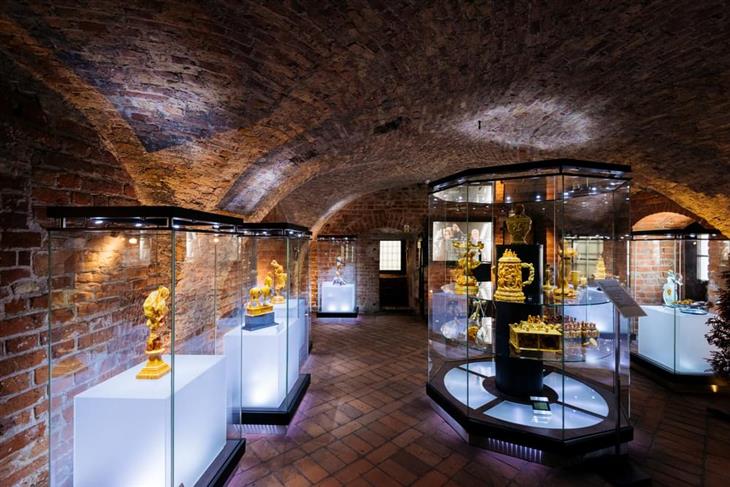
Unveiling unparalleled insights into Polish heritage lies the Amber Museum - an exquisite gemstone haven situated within what once served as a prison building. Since its inception in 2006 till date, it remains Poland's only museum wholly dedicated to amber exhibitions and artifacts display; showcasing one-of-a-kind items that date back millions of years ago - some even predating human existence itself! Beyond its visually stunning artistry lies a rich tapestry woven with tales from folklore belonging to countless cultures across time; narrating an enthralling history encapsulating this precious stone.

Located at the entrance of Gdańsk's port, there lies Sartplatte - a historic peninsula renowned as the initial battleground between Poles and Germans in September 1939. This significant event marked the beginning of World War II and captured global attention towards Europe's plight. From 1926 to 1939, this area served as a transit station for the Polish army, tragically witnessing numerous casualties in their gallant efforts to protect this crucial stronghold against Nazi control. In commemoration of these brave individuals, a monument was erected here, inviting tourists today to explore military structures such as guard posts and soldier residences.
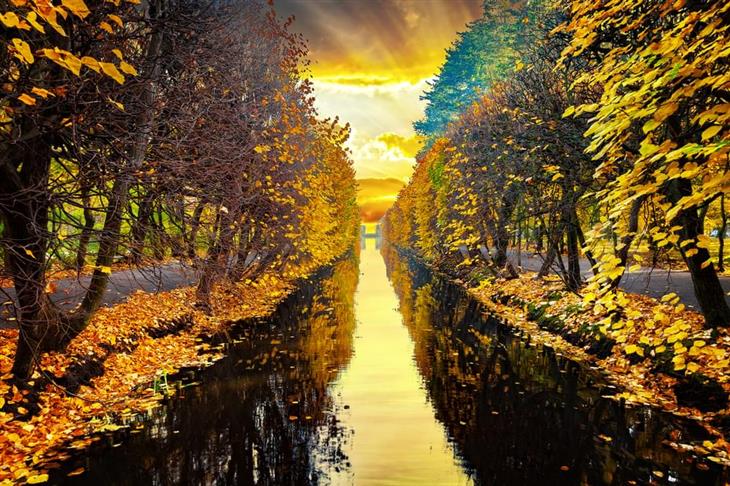
Located in Gdansk, this serene and tranquil destination offers a sense of peace and relaxation. Originally established as a garden for a monastery by the Cistercian monks during the 15th century, it has retained its calm ambiance over the years. The park underwent transformation in the 18th century, adopting characteristics reminiscent of French Gothic courtyards. Within its grounds, visitors will discover vibrant flower beds, meticulously trimmed bushes in various shapes, and intricate geometric patterns. Additionally, an Anglo-Chinese park can be found within this oasis. Open from 5:00 a.m. to 11:00 p.m., you have ample time to savor its beauty at your leisure throughout the day
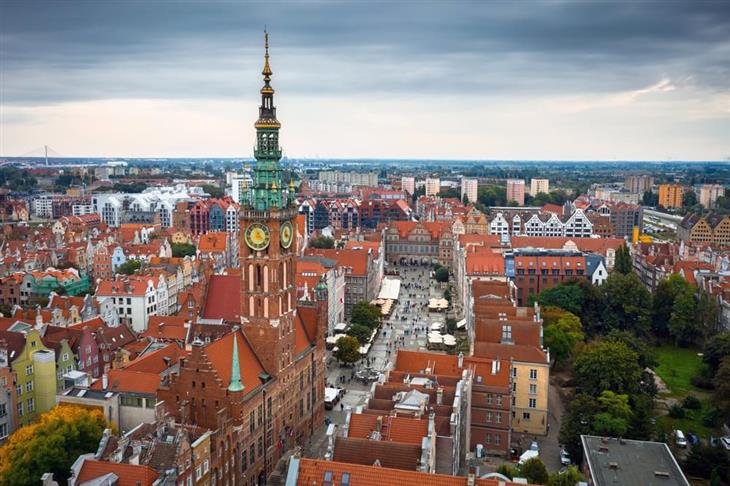
Undoubtedly, there is no denying that this particular structure stands out as one of the most remarkable edifices within the entire city. Erected during the 14th century in a captivating blend of Gothic and Renaissance architectural styles, it served as Gdańsk's town hall for numerous years. Presently, it houses a museum dedicated to history, offering visitors the opportunity to partake in guided tours of its various rooms and halls. Within each room lies an assortment of period furniture and art pieces that have undergone impressive restoration work. Moreover, while visiting this site, it is highly recommended to ascend the tower and behold the breathtaking panoramic view of the city below
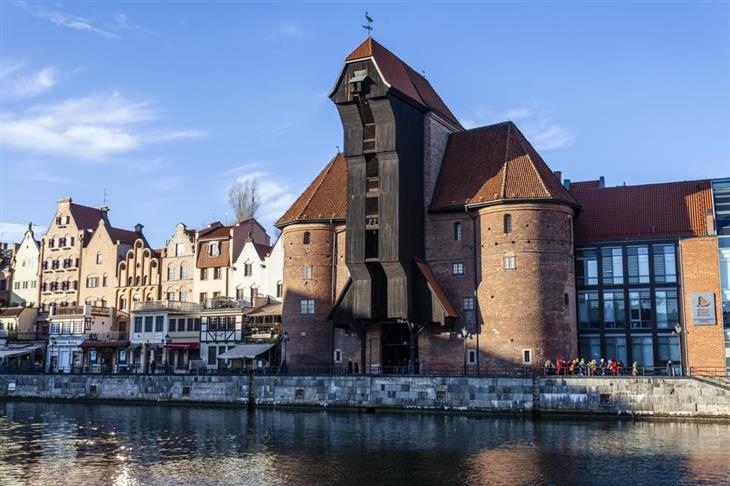
Situated on the banks of the Mutalba River, this massive crane is one of Gdansk's notable structures that contributes to its distinct character. Its origins can be traced back to at least 1367, as indicated in historical records. The crane serves as a magnificent testament to Gdansk's rich maritime history and its significant involvement in the medieval Hanseatic League, an alliance formed by merchant groups for mutual protection against pirates.
Throughout the years, the crane has experienced various challenges. The original building was tragically destroyed by fire in 1442, and although it was rebuilt afterwards, about 80% of it was demolished during the Battle of Gdansk in 1945. After an extensive restoration process spanning seven decades, it now stands proudly restored to its original glory. Remarkably, this crane is not only unique but also holds the distinction of being the sole restored building of its kind worldwide. Visitors have the opportunity to explore inside where they can find captivating exhibits from the National Maritime Museum. Additionally, nearby Mary's Church offers another noteworthy attraction worth exploring during your visit to Gdansk.
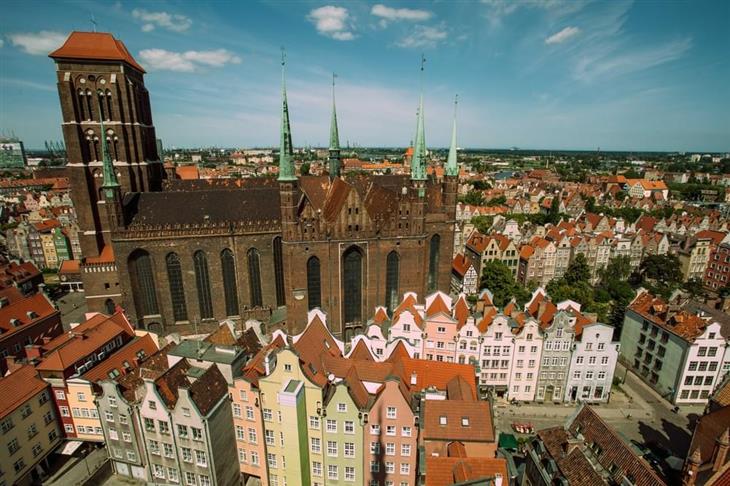
Situated in the heart of Gdansk, this church is an impressive example of Gothic architecture and is renowned as one of the largest brick churches globally. It was founded by the Alliance of Hanseatic Cities and symbolizes the prosperity of Gdansk. The church's towers are a sight to behold, and its interior features stunning stained glass windows and an astronomical clock that can be admired from within.
The Museum of the Second World War, established in 2017, aims to be a comprehensive institution dedicated to exploring the global impact of World War II. Its mission is to offer diverse perspectives on the conflict by highlighting its complex social, political, and cultural aspects before delving into its aftermath. Visitors will not only learn about soldiers' experiences but also gain insights into those of citizens, underground movements, and even individuals involved in rebuilding damaged cities
10. Długi Targ (The Long Market)
The Long Market in Gdansk is a must-visit for most tourists. This market square has been around since the 13th century AD and holds a rich history. In the past, it was a site where infidels, criminals, and witches were executed. However, today you won't find any gloomy displays here. Instead, you'll be greeted with buildings painted in soft pastel colors, as well as shops, cafes, restaurants that create an enjoyable atmosphere.
During your trip to Gdansk, it is highly recommended to make at least one stop at the Long Market. While this area can be expensive and filled with "tourist traps", there are also plenty of sights and a unique atmosphere that shouldn't be missed, even if you don't spend a dime.
